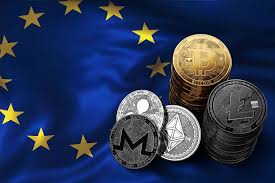The natural gas problem in Europe isn’t going away any time soon. Reserves are depleted. The costs are prohibitively high. Utility customers are seeing their costs rise. Gazprom, a major Russian gas supplier, isn’t selling as much as it formerly did.
All of this raises the question of how Europe, which imports the majority of its energy, will get through the winter without a gas crisis, especially if the season turns out to be colder or longer than expected?
Here’s how the European Union, which has a population of 447 million people, plans to address the crisis:
LOW STORAGE LEVELS ARE THE PROBLEM: To meet abrupt increases in demand for gas for heating or electricity, utilities turn to gas stored in underground caverns. However, Europe’s gas storage capacity was just 56% filled in 2021, compared to 73% a year earlier. Cold weather last winter, a paucity of Russian exports on the spot market, and strong demand in Asia for liquid natural gas delivered by ship is among the reasons. Cold weather, according to Europe’s pipeline owners’ organization, will necessitate importing 5% to 10% more gas than the highest levels seen in recent years to avoid shutoffs.
GAS PRICES HAVE INCREASED AS A RESULT: In Europe, the benchmark price is roughly 80 euros per megawatt-hour, up from as low as 4 euros in 2020 and more than four times its current cost of 19 euros at the start of 2021. Prices have dropped by as much as nine times since the beginning of the year. Consumers and lawmakers are concerned as a result of the price shock, which is passing through to utility bills.
HIGH PRICES ARE USED IN EUROPE TO ATTRACT MORE SUPPLY: Last month, Rystad Energy analysts used ship-tracking data to observe 11 tankers transporting LNG to Asia perform U-turns in the middle of the ocean to take advantage of lucrative sales in Europe. Traders were inclined to shift cargoes to Europe since prices were so high, even if they had to provide 100 percent of the price as compensation, according to researchers at data firm Energy Intelligence.
Xi Nan, Rystad’s head of liquid natural gas markets, said, “I wouldn’t say LNG is 100 percent enough, but it will play a very big role” in Europe’s energy answer. “Depending on how much Europe is ready to pay,” she added as a qualifier.
RUSSIA HAS NOT SENT AS MUCH GAS AS OTHER COUNTRIES: Gazprom, the Russian state-owned gas company, has sold less short-term gas through its pipelines that run through Poland and Ukraine and hasn’t filled as much of its European storage as it usually does, though it appears to be meeting its long-term obligations. Analysts believe Russia is emphasizing its desire for Europe to approve the Nord Stream 2 pipeline, which would transit Poland and Ukraine on its way to Germany. Russia’s force deployments along the Ukraine border have also heightened tensions with Europe.
PERMITTING STORAGE TO FALL TOO FAR BELOW REQUIREMENTS CAN BE A PROBLEM: The pressure declines when the storage caverns are depleted at the end of the winter, and gas seeps out more slowly. That means reserves may not decrease to zero, but gas may be delivered too slowly to satisfy an unexpected rise in demand.
IN THE SHORT TERM, European governments are providing consumers with cash subsidies to cushion the blow. Sweden became the latest country to do so on Wednesday, announcing a 6 billion kronor ($661 million) fund to assist people hit hardest by rising electricity bills.
IN THE LONG RUN, MORE INVESTMENT IN RENEWABLE ENERGY, SUCH AS WIND AND SOLAR IS THE SOLUTION. Nonetheless, officials acknowledge that gas will play a part in the transition for many years.
KAZAKHSTAN’S POLITICAL UNREST DOESN’T HELP: The oil flow was unaffected by violent protests that began over high petrol costs but swiftly escalated, showing wider unhappiness with Kazakhstan’s authoritarian government.
EUROPE REMINISCES ABOUT WHAT A BAD WINTER CAN ENTAIL: In 2018, a late-winter cold spell could send energy prices soaring. The United Kingdom has warned that some industrial uses of natural gas-powered electricity may be shut off. Although it did not come to it, no one wants to see a scenario like that. There won’t be another outage like the one that occurred in January 2009, when a pricing dispute between Gazprom and Ukraine resulted in a two-week blackout in southeast Europe. It turned off the gas heat in 70,000 residences in Sarajevo, Bosnia-capital, Herzegovina’s forcing many to stay with relatives and depleting space heater stockpiles.
IF ALL ELSE FAILS: EU law mandates that countries assist one another in the event of a gas shortage. Governments can declare a gas emergency and shut down industrial customers to protect households, causing economic harm but avoiding a humanitarian and political calamity.
They can theoretically demand cross-border gas supplies from one another. Europe has built more reversible pipeline connections in recent years, but not enough to span the continent as a whole, leaving certain countries more vulnerable than others.
However, the system has never been put to the test, and there are concerns about whether countries would be willing to share gas in a crisis. According to Ruven C. Fleming, an energy law blogger and assistant professor at the University of Groningen in the Netherlands, the European Commission is working on modifying the rules to permit cooperative gas purchases on a voluntary basis.
According to Fleming, the change “is a clear indicator that even those who installed the mechanism don’t think it would operate very well.”

















